They’re like that in this apartment we’re renting and I keep seeing them elsewhere. I don’t get it.
deleted by creator
Allows you to remove power from the plugged in device without unplugging it. This provides convenience to easily and quickly turn things on and off and prevents arcing when unplugging.
That’s exactly what I do, because it’s more convenient than unplugging everything.
I live in South Africa, where we had rolling blackouts (called loadshedding) for a few years. It’s easier to switch everything back on when the power comes back than to plug it back into a socket without a switch, especially with my fucked up spine.
The electricity in the place I live was done poorly, so having something plugged in “live” risks a surge or something and then the appliance gets fucked and then everything smells like burnt plastic.
And that’s the best case scenario. Others have had housefires.
Also, the South African plugs aren’t pleasant accidentally to step on. It won’t pierce your foot, but it can still hurt like a motherfucker for a few seconds if you step on it in the wrong way.
Those UK plugs do look a lot more nasty to step on. I shudder at the thought.
I like the EU and US two prong cables ( 🔌?) where the prongs are parallel to the cable, but not the cables with the orthogonal prongs.
I like the EU and US two prong cables ( 🔌?) where the prongs are parallel to the cable, but not the cables with the orthogonal prongs.
Non-grounded plugs aren’t that great, though, and once you add the third prong the plug gets much less flat. Compare:
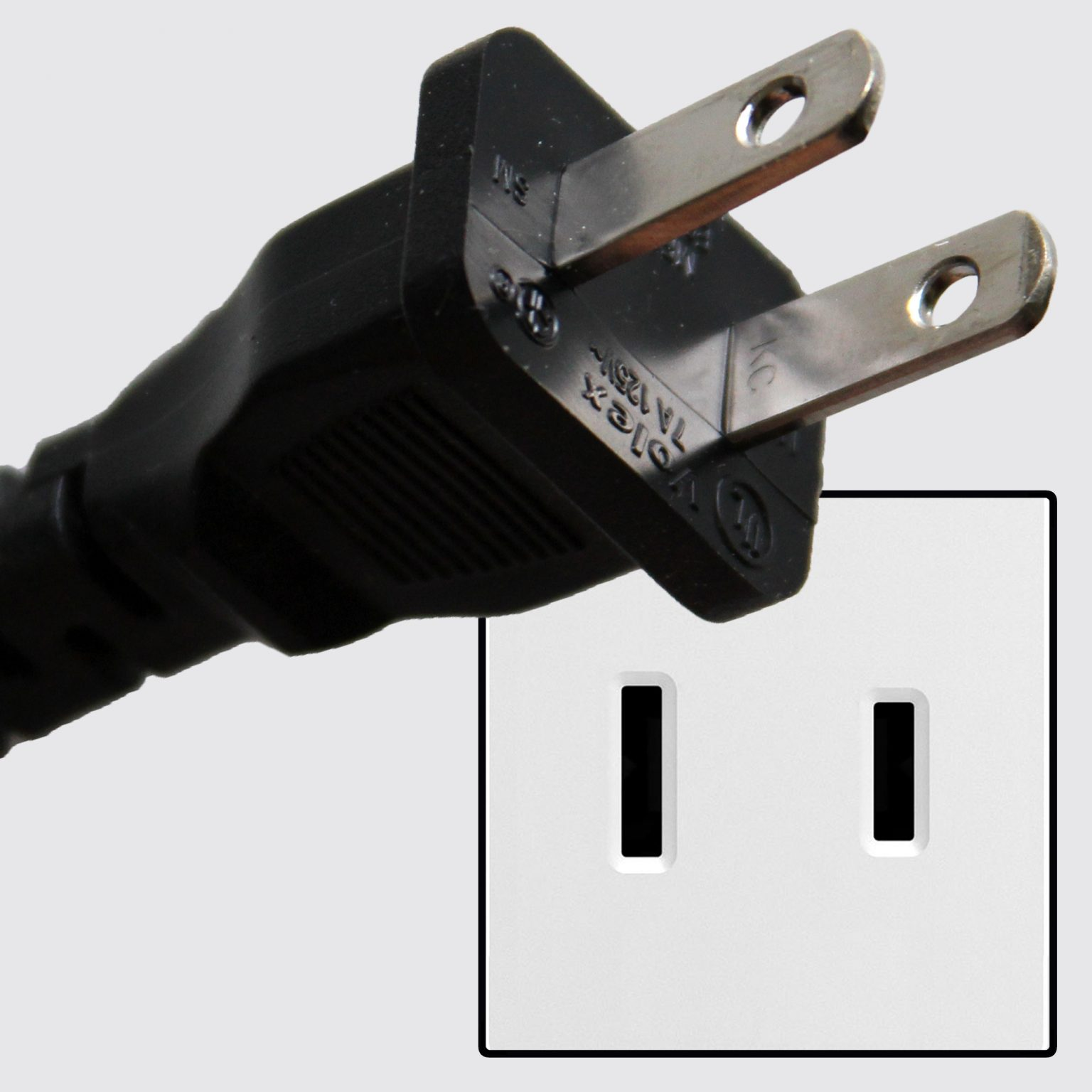
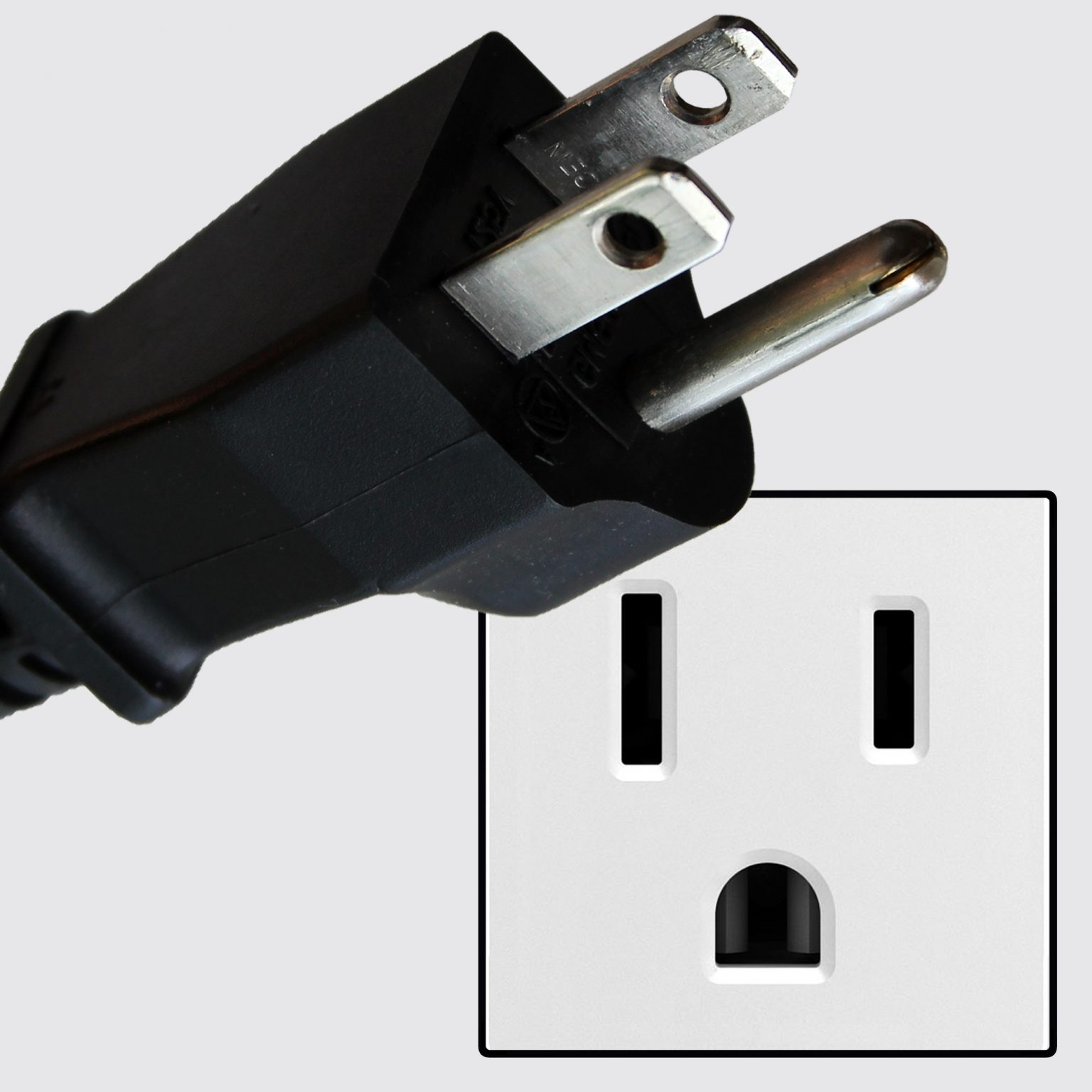
Maybe Italy and Chile have the best idea in terms of slim grounded plugs, although the lack of polarity might be a problem?
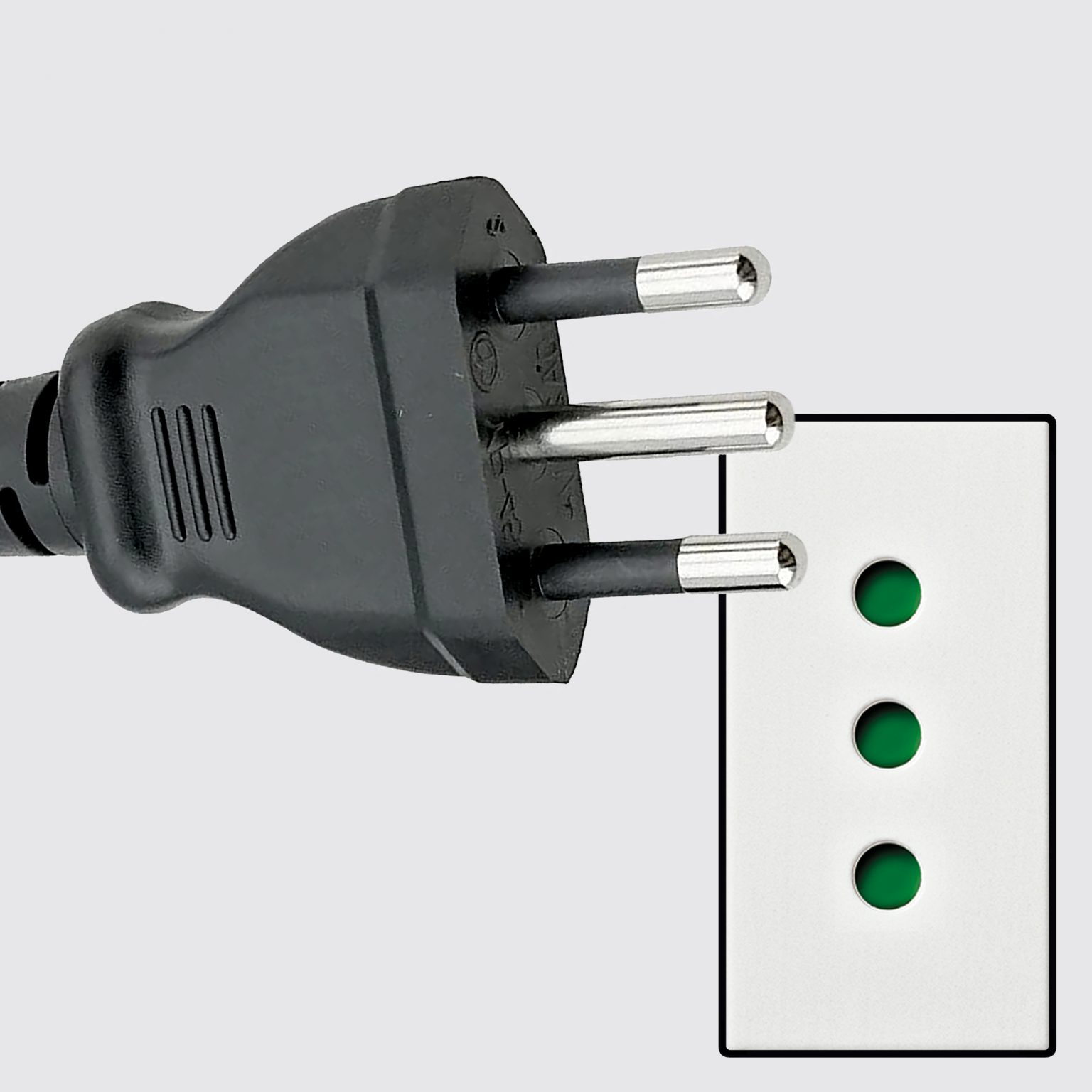
Also, IMO right-angle plugs are often better than straight ones because you can put furniture closer up against them and do so without stressing the cable.
right-angle plugs are often better than straight ones because you can put furniture closer up against them and do so without stressing the cable.
Yeah that is definitely a huge bonus. I’ve taken it for granted.
We’re slowly adopting three pronged Italian/Chilean-type plugs that will be “backwards-compatible” with the EU plugs. I have no clue about polarity or anything like that.
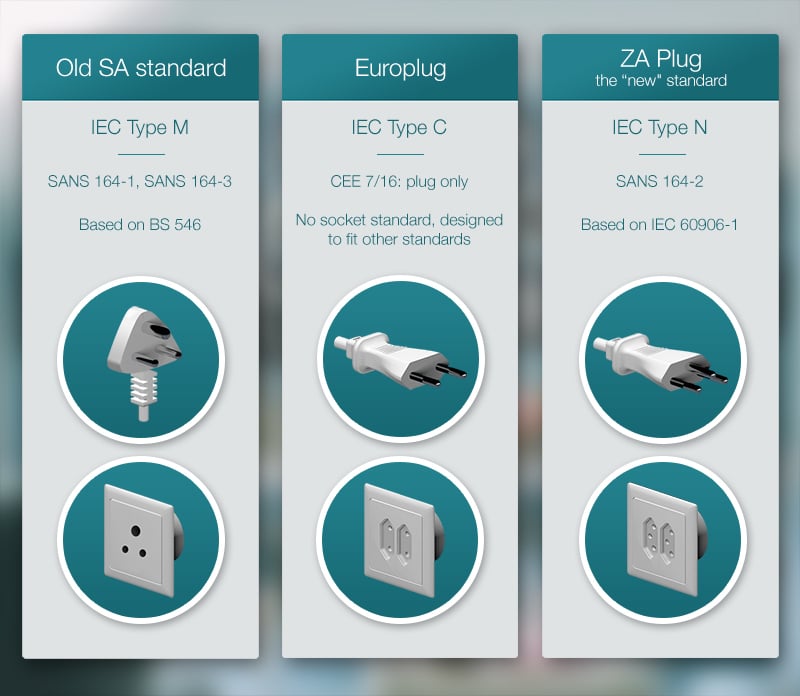
New sockets include em. The original three pronged socket is kind of a hazard. Kids can stick their fingers in there. Not sure how that got approved.
Wait until you step on with bare feet an upturned UK plug. Worse than stepping on Lego
why would the lack of polarity be a problem? the outlets only deliver AC, and everything plugged into them are made for AC.
I gotta admit I don’t entirely understand it either, but people claim it matters. ¯\_ (ツ)_/¯
https://www.physicsforums.com/threads/why-is-the-correct-polarity-important-with-ac.979324/
exciting to stand on
Thanks, I hate it.
This is virtually standard in Australia
It is standard in NZ
Depending on who built the house, it’s the standard for a “good” house in Ghana, Nigeria, Zambia and I think Kenya.
deleted by creator
I like them, personally. You don’t have to use them but they are sometimes handy. I just spent 30 seconds feeling around a TV to turn it off only to discover it doesn’t have buttons. Killed it at the wall.
It’s not a deal breaker, in any case. The weird foreign convention I would like to shame is doors that require a key to open from the inside.
I usually see keyed from the inside locks when there is glass in/near the door to prevent someone from breaking the glass, reaching in and unlocking the door.
Can’t that be prevented by safety glass instead? Doors that need a key to open from the inside risk trapping people inside the building.
If a burger is gonna break the glass, a keyed lock isn’t going to deter them. Unless it’s like only a tiny glass window on the door.
I just spent 30 seconds feeling around a TV to turn it off only to discover it doesn’t have buttons.
Ugh. That annoys the shit out of me. Our dog chewed up the TV remote when she was a puppy, but only got to the power button. But since the TV had no physical buttons, we couldn’t turn it on and off anymore until we got a new remote.
I have an old android phone I keep around because it has an IR LED on top and I loaded it with a few free universal remote apps. They all work offline and it’s come in handy so many times.
The weird foreign convention I would like to shame is doors that require a key to open from the inside
You can’t lock yourself out with those
But you can lock yourself in. During a house fire.
You can lock yourself in with the other type too.
No you can’t. You can lock yourself out, but a typical residential house built to code in North America has a latch handle that always turns from the inside, even when locked, and usually unlocks by doing so to prevent accidental lock-outs. And likewise if the door has a deadbolt, it must have a deadbolt with a handle on the inside. Most other kinds of locks are also easily accessible and removed by hand from the inside. The point is that they can’t require a key from the inside, because if you can’t find the key then you are locked inside and in thick smoke and fire that the key may be impossible to reach. If any egress door requires a key to unlock from the inside it is considered a serious fire hazard and will never pass a code inspection. (Of course, foolish people can still add them later but you can’t prevent stupid and it’s still a fire hazard not to mention impractical)
These types of building code and fire code rules are typically written in blood. People have died because of this.
The weird foreign convention I would like to shame is doors that require a key to open from the inside.
Huh. Where have you seen those? Seems dangerous.
Kind of off topic, but I’ve just gotta add that the safety shutters over the positive and negative terminals that only open when the ground pin (which is longer than the others on the plug) is inserted up top is brilliant, it basically makes short circuiting impossible. Electrical outlet design is one of the few things I’ll concede the UK does better than the rest of the world.
I too am relatively envious of the UK’s outlet design, I only hate how bulky and foot destroying they are.
I’d like to think Australia has a nice middle ground design to their sockets/plugs without the foot destroying bulk. Still get the shutter variants for bathrooms too.
Maybe, but with the switches on the sockets, I hardly ever unplug anything at all unless I’m moving it. Why would I?
So pretty much every time something’s unplugged, it’s in my hand or away in a cupboard, never lying on the floor.
Tom Scott has a video all about the UK power outlet plug and socket and it’s an engineering marvel. The switch is just one feature.
The switch isn’t really a a feature of the UK plug, rather just something they seem to have started doing with their sockets.
Well, the design of the plug also implies the design of the socket. I was born in the eighties, and I’ve never seen an electrical socket without a switch, except for the appliance socket used for the cooker, which is behind where you install the appliance - the switch is higher up, above the countertop where it is accessible.
Basic extension trailing sockets don’t, most of the time unless you buy a snazzy one. But it’s by no means a recent development.
Plug and socket obviously go together but I just mean that you could have the switches for any plug, it’s not tied to the plug but just rather what socket plate (or what’s the term) design is adopted. Schuko could have those switches, I think Yanks have them in newer plug plates and so on. It’s just that the UK has adopted (in a standard or just commonly for some other reason) the switches.
the safety shutters over the positive and negative terminals that only open when the ground pin (which is longer than the others on the plug) is inserted up top is brilliant
The US is catching up in that regard, at least, with tamper-resistant (TR) outlets being mandated by the NEC since 2008.
It’s balanced by light switches being outside of the bathroom, which I absolutely hate.
I present to you my favorite YouTube person:
The GFCI/RCD, a simple but life saving protector:
https://youtu.be/ILBjnZq0n8s?list=PLv0jwu7G_DFU62mIGZNag5vQ0a6tDGBpO
In defense of the Switched Outlet:
Electrical topics playlist:
https://youtube.com/playlist?list=PLv0jwu7G_DFU62mIGZNag5vQ0a6tDGBpO
I could just watch this guy all day lol
A fellow human of great and distinguished taste I see
Safety, easier to switch things off without unplugging them. Why not have one if it’s more convenient? Not all of them have switches though.
It made a lot more sense when things didn’t have their own power switches but…what does that apply to anymore? How many devices do you own that are powered off exclusively by unplugging it? Why pay for the manufacturing time and material to add a switch if nothing uses it anymore?
There are still times where it’s convenient. I have some display cases with integrated lighting and the inline switches are incoveniently between the case and the wall so its super handy to turn it on and off at the plug.
Being able to turn things off at the plug also reduces standby/phantom power when things are in sleep, which for some devices adds up more energy usage than you’d think.
Sometimes when people go on holiday for two weeks they like to disconnect the electrical items in their house for safety. With switched sockets you can just turn them off instead.
I’m sure I could live just fine without switched sockets, but it’s convenient they are there.
Ah, now all of that makes sense! Thank you!
I like the integration of the switch, should be standard. I use many switch plug-ins just to avoid stand-by consumption (it really adds up over the year) and to avoid high pitch humming on some devices.
YSK: there’s also remote controls for these switches, very handy
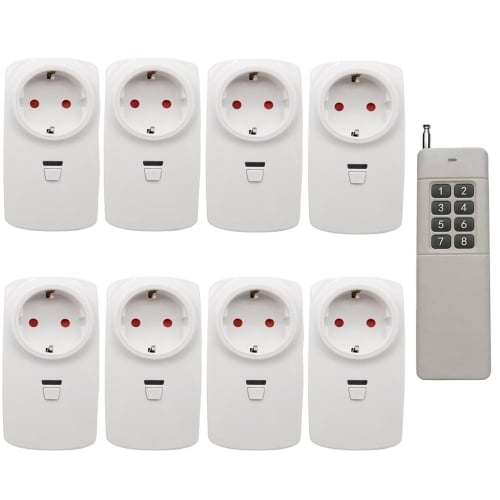
I’m not an electrician, but wouldn’t remote control imply that something still remains on standby? So that it can receive a wake-up signal, if nothing else.
Indeed so but the power draw is very miniscule.
UK household electricity is pretty spicy compared to many other places - it has more safety features as a result. (3 pinned fused plug, socket switches etc)
Isn’t it just 230v 50 Hz like most of the world?
Apparently around 65-70 % of the world population (with access to electricity) has 230v 50 Hz.
I have been with 110v plenty of times used to wire houses in my youth. Been hit once with 220v knocked me on my ass for 3 days. I stopped being so cavalier after that I wish they had those outlets vs the midevil outlets the US has.
“so many”?
isn’t it all of them?
i live in malta, we inherited your plugs and sockets. Never seen one without a switch over here. Til
All of them in the UK.
No not all of them.
Source, I was born here.
Being a uk person its cause they can & its also in to building / electric code. Its just a switch that breaks the live leg, stops sparking when plugging in stuff.
Your sockets spark when you plug something in?
I’ve definitely had that happen to me, sort of at random, in the U.S.
But it doesn’t seem to have any effect. It’s not like a gigantic spark and it’s pretty contained.
Oh I’ve never seen that in the US, maybe I just didn’t notice
Home electricity in North America has roughly half the voltage as elsewhere in the world, and double the voltage is double the arcing potential, so that figures.
Safety and convenience versus the cost of including them, I expect.
The Wikipedia page for BS 1363 says they’re optional and weren’t added to the standard until 1967. I can’t recall having seen a domestic socket without one.
But it seems the only legal way to read the actual standard is to pay for it, and even the HSE website isn’t much help.
So basically, this concept was invented by a committee.
Yes, but what’s your point here? “Oh no, someone preserve us from… *checks notes* a group of subject matter experts!”?
If that annoys you for some reason, you’d best not learn how the overwhelming majority of products and services see the light of day. Rage aplenty awaits.
I didn’t have a point, I had a question. And it doesn’t annoy me, I just didn’t know why.
Why are people giving me shit for asking a stupid question in the stupid questions community? Is there a supremely stupid questions community I should have asked instead?
Your original question was answered by numerous people in the spirit of the community, so you have got best answers it can provide at the moment, but your follow-up comments suggest that you don’t think so.
But I may have misjudged your intent, as looking further I can see you’ve been replying to comments individually. My initial impression was that you were masquerading statements as questions. If I have that wrong, then my apologies.
I was genuinely trying to understand.
Yes. Welcome to the UK. You will need to adjust to small aggravations such as this. Good luck.
Everything you’d want to know about British wiring and my introduction to Tom Scott:
To turn shit on or off
in America many houses have the on off switches with the lights on the other side of the room for lamps etc
also small child/baby protection.
But who will protect the big babies?
















